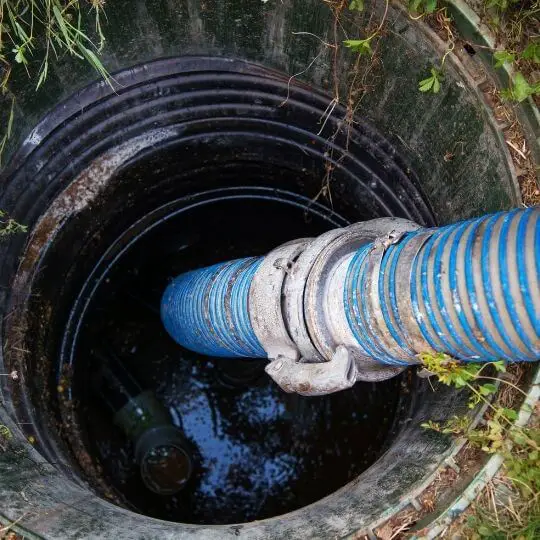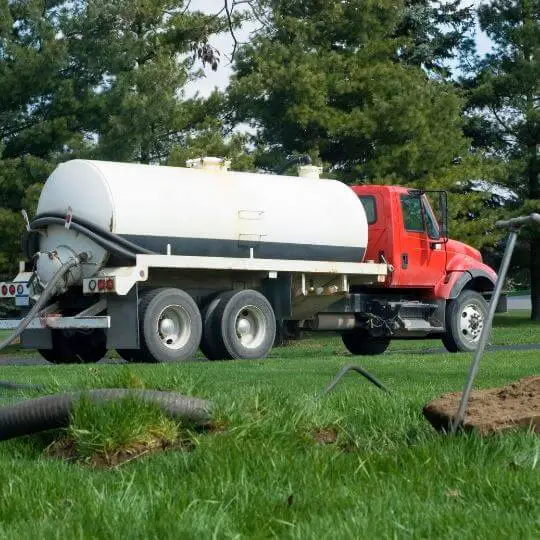Many homeowners don’t take time to think about their septic system. Neglecting septic tank maintenance can lead to a bigger problem in the future. “IF” properly maintained, septic tank never needs emptying as they are designed to process waste for decades.
Septic Tank Never Needs Emptying: Myth or Reality
Though there are various essential elements for a proper maintenance plan of the septic system, the most vital one is regular pumping. According to plumbing experts, they recommend pumping septic tanks every 3-5 years. [1]
However, it’s best to evaluate your septic system based on household water usage and the specific septic system.
This article will discuss how a septic system works, signs that show septic need to be pumped, when to empty them, and how to clean the septic system.
Let’s first look at the definition of a septic tank
Septic tanks are underwater sedimentation tanks used for wastewater treatment through biological decomposition and drainage.
A septic tank allows safe disposal of wastewater and is popularly used in areas off the main sewage network or have poor drainage systems.
How do septic tanks works?

Septic tanks work by collecting wastewater and the excreta in one underground tank.
Septic tanks are not the same as sewage systems.
A septic tank for home use can either be made of fiberglass, concrete or plastic. Usually, it’s a round/ rectangular-shaped container.
The tank has two pipes connected: for inlet and outlet. The inlet pipe collects wastewater in the tank and stores it long enough that liquid and solid waste separate. The outlet pipe, also known as the drainfield, removes all preprocessed wastewater then spreads it in the watercourses and soil.
After a short while, wastewater separates in three-layer:
- The top layer is called scum. It consists of grease and oils floating above all the waste
- The middle layer contains wastewater with some waste particles
- The bottom layer contains heavier particles that form a layer of sludge
Inside the septic tank, bacteria from wastewater help break down solid waste. The bacteria help speed up the decomposition process, thus allowing liquids to separate and drain away easily.
How to tell when a septic tank needs emptying?

When a septic tank is not maintained as expected, some signs indicate a developing problem.
Below are some of the most common signs that may appear.
- Sluggish in drains or flushing
The efficiency of the drains is major indicator of distress in your septic system. If the septic system starts to back up, you will notice the tub, shower, and sinks lagging in draining, or the toilet reduces flushing as quickly or thoroughly as possible. This warning sign needs action before it builds up to a costly and worse problem.
- Standing water
Once the septic tank gets full, you can notice water pooling in different places around the yard. The commonplace is the drain field or area around your septic tank. Standing water is a crucial sign that the septic system needs to be inspected or pumped immediately.
- Odor
As the septic tank fills up, there is less space for odor-causing gases in the tank. After some time, the gases will start to emanate from the drains or toilets inside the house. Also, the odor-causing gases may find a way through the drain field thus, causing sewage smell and sulfurous outdoors.
- Lush Green Lawn
There will be no observable change in the lawn above when the septic system is functioning correctly. However, if the grass on the lawn is lush and green than in other areas, then there is a problem. It happens as the grass is getting extra fertilizer in the excess waste liquid.
- Sewage Backup
A raw sewage backup is an obvious sign of a septic system problem. If this happens, contact any septic service immediately.
Septic tank not pumped for 25 years: Here is what happens
The decomposition process has slowed down, causing blockage and overflow. Soil, solid waste, excrement, and sludge have built up. The process worsens, and in the end, the septic system fails and backs up completely.
However, it may be difficult to tell when your septic system fails. It can vary from two years to 100 years. That is why it’s recommended to act fast before it reaches its breaking point.
How to clean a septic system?

The cleaning process of a septic tank varies depending on the type of service provider hired.
Cleaning the water before it leaves the septic tank is one of the best ways. You can also apply safe monthly septic tank additives like Ridex and Yeast.
Let’s take a quick overview of what happens when cleaning
- Uncover the tank
The step involves locating the tank buried somewhere close to your house. Tip: follow the sewer pipe located at the lower level of the house
Dig out the top until you find an access lid. Once you can access the tank, inspect the septic tank thoroughly, including the sides. Also, look out for broken or rusted pipes as any damage requires professional help.
- Clean the filter
Pull up the access lid of the tank. Locate the inlet and outlet pipes of the tank as filters are inside these. However, not all septic tanks have filters installed.
Then pull up the filters. You can use your hands with protective rubber gloves or a shovel, rake, or gardening hoe. Once the filter is out, use a hose sprayer to clean. After that, inspect for any damages caused by solids clogging and cracks. Once done, return the filters to their position.
Ideally, the tank can have two lids to be exposed. This solely depends on the age of the system. Newer homes tend to have two compartments tanks.
But do you need to pump both sides of the septic?
Yes. If the tank has two lids, it should be exposed so that you can pump both sides of the septic.
- Observe liquid levels
While cleaning your septic tank, it is vital to observe the liquid level. You will need to cut a PVC pipe to measure the liquid levels. High liquid levels indicate a drain field problem; low liquid levels indicate leakage in the tank.
- Pump the tank
After doing all that, you can choose to pump your septic tank or hire professionals. If you pump it by yourself, you still have to transport the waste, dispose of the wastes according to the law.
That is why we recommend hiring a professional to handle all the processes. Once the tank is pumped, return the lids, and cover the tank.
Also, a yearly inspection of the septic tank is essential to be safe. Generally, pump the septic tank every 1-3 years.
Are You Sure That Your Septic Tank Never Needs Emptying?
Cleaning and maintaining a septic tank can be annoying but, it only happens once a year. [2]
Conducting a thorough inspection will help you avoid additional charges. But still, you can contact professionals to inspect for you.
How often you clean your septic tank depends on the number of bathrooms in your home, is rentals or private property, and how often the house gets used. Also, considering the size of the tank is vital as it will determine the cleaning period.
As a homeowner or landlord, you are the person who is responsible for emptying the septic tank.

Michael Davis is a heating & plumbing expert who currently works as independent contractor in SC. He also writes for Plumbertip.
For almost 10 years he worked on various plumbing tasks across South Carolina.



